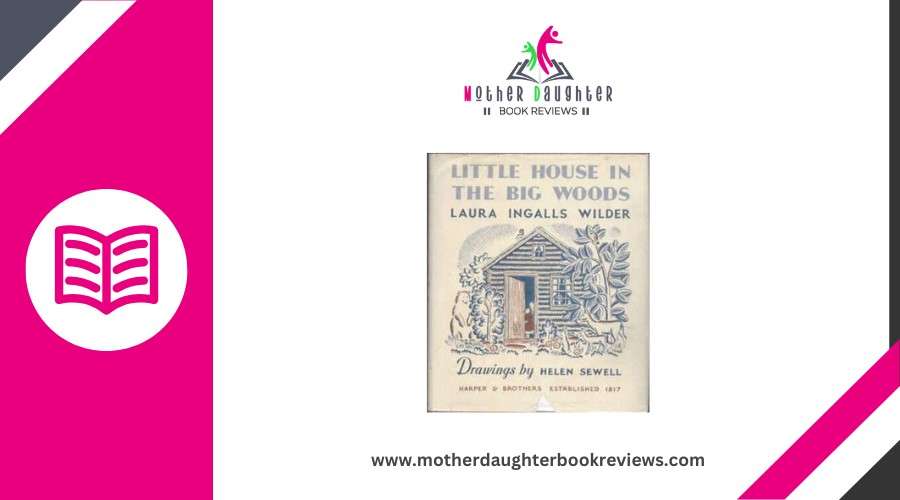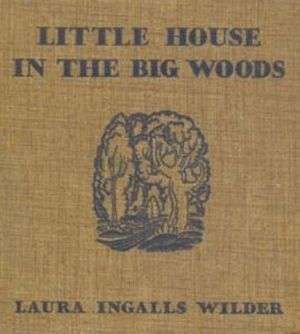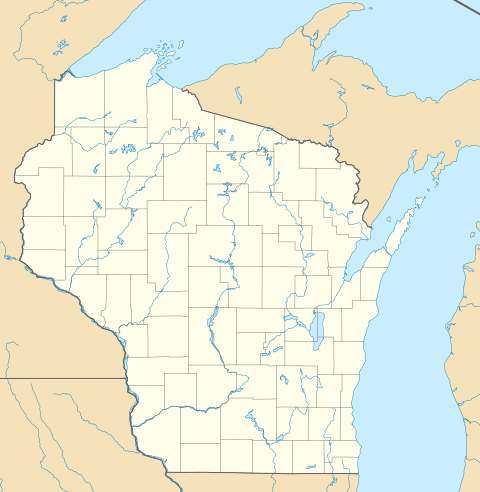A Story of Frontier Life in Little House in the Big Woods

In "Little House in the Big Woods," you'll uncover the resilient and resourceful life of the Ingalls family as they navigate the challenges of frontier living. Experience Pa's storytelling, Ma's organized household, and the adventurous spirit of Laura and her sisters. Learn about their daily chores like churning butter, fetching water, and mending clothes. Celebrate with them during seasonal events and understand how they gracefully handle harsh winters and encounters with wildlife.
Life in the Big Woods
In the Big Woods, life was all about resilience and resourcefulness. You'd find yourself surrounded by dense forests, teeming with forest resources vital for daily survival. Trees provided wood for building homes and making tools, while wild animals offered food and clothing. To thrive, you had to master survival skills like hunting, fishing, and foraging.
Imagine waking up each day knowing you'd need to gather what you could from the forest. You'd learn to identify edible plants and avoid dangerous ones. The knowledge of how to set traps for rabbits or track deer would become second nature. You couldn't just rely on a store for supplies; you had to be self-sufficient and clever in using what nature provided.
Firewood gathering would be a daily task, indispensable for cooking and heating your home. You'd also need to know how to preserve food through smoking or drying, ensuring you had enough supplies to last through winter. Every member of the family, young and old, would contribute to these efforts, creating a tight-knit community built on mutual dependence and shared knowledge.
The Ingalls Family
Often, the tale of the Ingalls family is an enthralling example of frontier life. You'll find that the Ingalls family dynamics are a core element of their story. Pa, Ma, Mary, Laura, and little Carrie each play unique roles that contribute to their tight-knit unit. Pa's storytelling and fiddling fill the evenings with joy and warmth, while Ma's steady hand keeps the household running smoothly. The bond among the family members is strong, built on mutual respect, love, and a shared commitment to overcoming the challenges of frontier life.
Family traditions are deeply woven into the fabric of their daily existence. You can picture them gathered around the hearth, listening to Pa's fiddle tunes, or celebrating Christmas with homemade gifts and special treats. These traditions provide a sense of continuity and comfort, grounding them amid the unpredictability of the wilderness. They also emphasize the importance of togetherness and resilience.
Daily Chores and Activities
Daily life on the frontier required everyone, even the youngest family members, to pitch in with chores. You'd wake up each day knowing exactly what was expected of you, thanks to a strict chores schedule. The daily routines kept the household running smoothly, and everyone played a part in the hard work.
Imagine starting your day by gathering eggs from the chicken coop, your hands cold from the morning air. Then, you'd help churn butter, a task that could take hours but was vital to feed your family. You might also find yourself tasked with fetching water from the well, a heavy and tiring job but fundamental for cooking and cleaning. At the end of the day, you'd help tidy up, putting everything back in its place.

Seasonal Celebrations
After a long day of chores and hard work, frontier families found joy and relief in their seasonal celebrations. You'd be amazed at how these events brought the community together. During the fall, the harvest festival was a major highlight. Families gathered to celebrate the successful gathering of crops. You could see tables laden with home-cooked meals, from fresh bread to apple pies. Children played games, and everyone enjoyed music and dancing under the crisp autumn sky.
When winter arrived, the celebrations didn't stop. The winter solstice marked another significant time for families. You'd find folks preparing special meals, decorating their homes with handmade ornaments, and lighting candles to chase away the long, dark nights. The warmth from the hearth, combined with the glow of the candles, created a cozy atmosphere that made the cold winter bearable.
These seasonal celebrations were more than just a break from daily routines; they were a way for families to bond, share stories, and create lasting memories. You'd find that these traditions helped them stay resilient during the challenging frontier life. Each celebration, regardless of whether during the harvest festival or the winter solstice, brought a sense of unity and joy.
Wildlife and Nature
In the heart of frontier life, the wilderness was an ever-present and awe-inspiring backdrop. As you step into the world of "Little House in the Big Woods," you'll find yourself surrounded by the dense forest teeming with wildlife and the thrill of forest investigation. Imagine the excitement of animal encounters, regardless of it's the sight of a deer gracefully leaping through the trees or the sudden rustle of a squirrel scurrying up a tree trunk.
The forest is more than just a setting; it's a living, breathing entity that shapes every aspect of life. You'd feel the crisp air on your face and hear the symphony of bird songs overhead. The woods are a place of
Every moment in the forest is a chance to connect with nature, to learn, and to grow. It's a world where adventure and serenity coexist, inviting you to investigate its depths.
Challenges of Frontier Life
Frontier life presented numerous challenges that tested the resilience and ingenuity of its settlers. You had to develop survival skills quickly to endure the harsh conditions. The winters were especially brutal, and without proper preparation, your family could easily run out of food and fuel. Gathering and preserving enough supplies was vital, and you often relied on hunting, farming, and foraging to stockpile resources. Each family member had a role, regardless of it was chopping wood, tending to livestock, or mending clothing.
Relying on community support was another significant aspect of frontier life. Neighbors were more than just acquaintances; they were lifelines. In times of sickness, injury, or childbirth, you couldn't depend on modern conveniences like hospitals or urgent care centers. Instead, you turned to your fellow settlers for help. They provided medical knowledge, shared food, and assisted in building homes or barns. This sense of community was what often made the difference between life and death.
Additionally, you faced threats from wild animals and the elements. Securing your home and livestock from predators requires vigilance and ingenuity. Day by day, your survival skills and reliance on community support were put to the test.

Lessons for Young Readers
Living on the frontier wasn't just about survival; it taught valuable lessons that are still relevant today. As you immerse yourself in "Little House in the Big Woods," you'll uncover timeless teachings that shape character and nurture growth. One of the most powerful lessons is the importance of community values. In a world where neighbors were few and far between, every gesture of kindness and cooperation mattered. You'll see how helping each other during tough times forged strong bonds and a sense of unity.
Resilience lessons are also front and center. The Ingalls family faced harsh winters, unpredictable weather, and scarce resources. Instead of giving up, they adapted and found creative ways to thrive. You can learn a lot about perseverance and the strength of the human spirit from their experiences.
Conclusion
Little House in the Big Woods is a beautiful exploration of frontier life, filled with lessons on resilience, resourcefulness, and the importance of family and community. As you follow the Ingalls family through their daily chores, seasonal celebrations, and encounters with nature, you're reminded of the simplicity and strength that defined their existence. Their ability to face challenges head-on and find joy in life's small moments offers timeless lessons for young readers.




